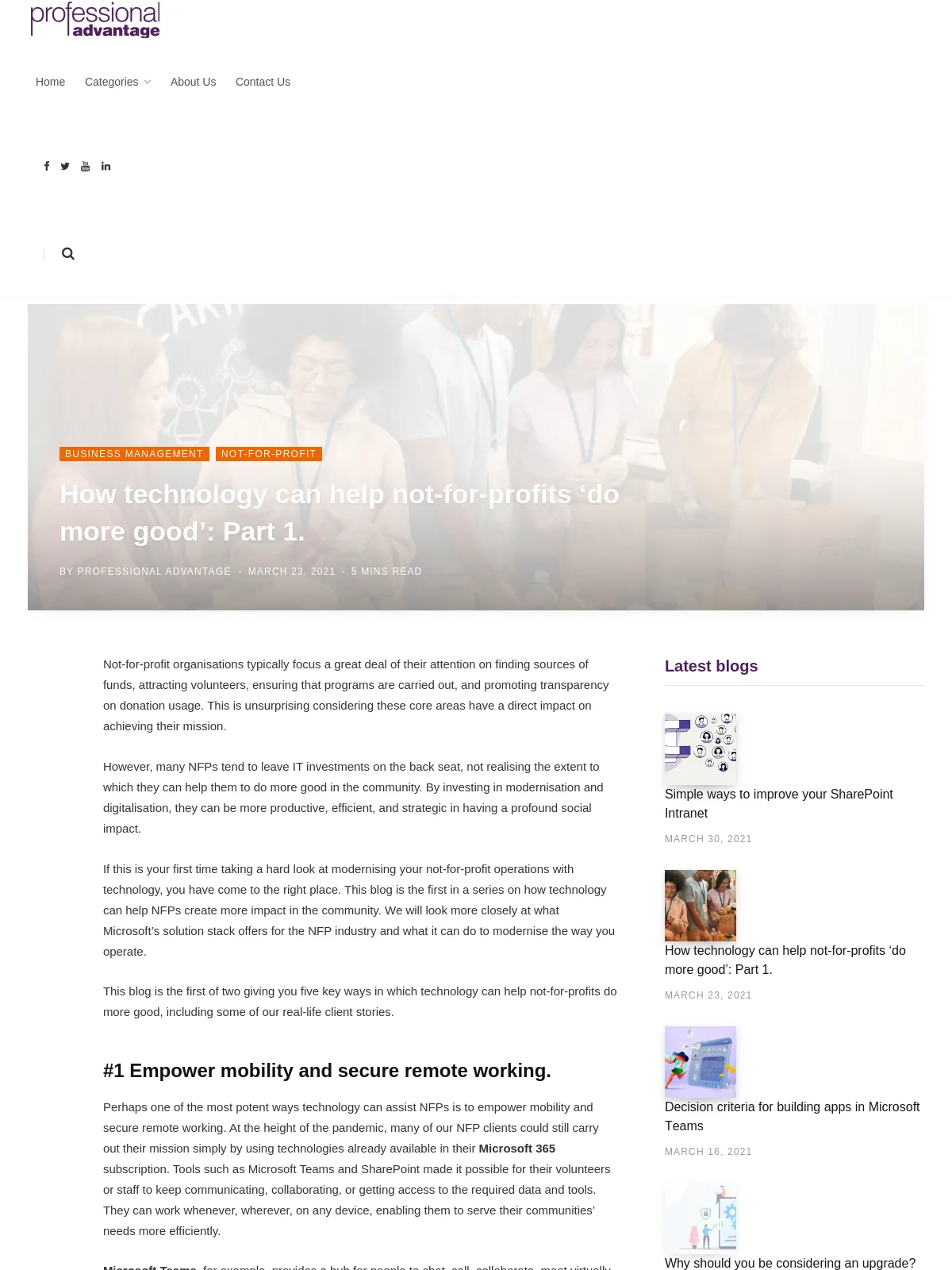How technology can help not-for-profits ‘do more good’: Part 1.
Blog: Professional advantage - BPM blog
Not-for-profit organisations typically focus a great deal of their attention on finding sources of funds, attracting volunteers, ensuring that programs are carried out, and promoting transparency on donation usage. This is unsurprising considering these core areas have a direct impact on achieving their mission.
However, many NFPs tend to leave IT investments on the back seat, not realising the extent to which they can help them to do more good in the community. By investing in modernisation and digitalisation, they can be more productive, efficient, and strategic in having a profound social impact.
If this is your first time taking a hard look at modernising your not-for-profit operations with technology, you have come to the right place. This blog is the first in a series on how technology can help NFPs create more impact in the community. We will look more closely at what Microsoft’s solution stack offers for the NFP industry and what it can do to modernise the way you operate.
This blog is the first of two giving you five key ways in which technology can help not-for-profits do more good, including some of our real-life client stories.
#1 Empower mobility and secure remote working.
Perhaps one of the most potent ways technology can assist NFPs is to empower mobility and secure remote working. At the height of the pandemic, many of our NFP clients could still carry out their mission simply by using technologies already available in their Microsoft 365 subscription. Tools such as Microsoft Teams and SharePoint made it possible for their volunteers or staff to keep communicating, collaborating, or getting access to the required data and tools. They can work whenever, wherever, on any device, enabling them to serve their communities’ needs more efficiently.
Microsoft Teams, for example, provides a hub for people to chat, call, collaborate, meet virtually, host company-wide live events, and access most-frequently-used apps. SharePoint, on the other hand, provided people with a secure space to store and collaborate on documents, stay updated with the latest news, and get access to shared files in the organisation. These two platforms are readily available in a Microsoft 365 Not-for-Profit SKU.
CASE IN POINT: ATSICHS BRISBANE’S SHAREPOINT & TEAMS DEPLOYMENT
ATSICHS Brisbane is Queensland’s largest indigenous healthcare organisation that delivers health and human services across its medical and dental clinics, aged care facility, and numerous family and child services programs. The company wanted to improve data accessibility for its people by providing a single content repository, that is accessible on the go. Their decision to shift from traditional to modern office productivity tools opened doors for a new way to communicate and collaborate.
Implementing SharePoint and Teams with Professional Advantage’s expert assistance has enabled ATSICHS Brisbane to achieve the following:
- Enabled real-time communications using Teams for chat, call, or holding meetings online.
- Get quick access to content that matters to them, with a central and secure content repository.
- Able to co-author documents in real-time, streamline document approvals, and track document versions.
- Allowed team members to see progress on tasks or what someone is working on.
Read ATSICHS Brisbane’s full success story here.
#2 Quickly automate business processes.
Most NFPs would love to automate their manual business processes, but only with the least amount of effort and money involved. As funding relies on corporate donations, government support, or individual contributions, there is hardly the budget nor the bandwidth to get into complex or lengthy process automation initiatives. However, this doesn’t have to be the case anymore for NFPs.
Microsoft 365 Not-for-Profit subscribers already have the tools to build agile business processes, using the no-code, low-code technology of Power Apps and Power Automate. Combining these two will allow you to build apps quickly and easily, even without the traditional coding skills. Using existing templates in Power Apps, your people can now design, automate, integrate, and deploy apps in no time!
CASE IN POINT: DIABETES VICTORIA’S ONLINE RECRUITMENT FORM
Diabetes Victoria is a not-for-profit organisation that supports, empowers, and campaigns people who live with diabetes. Their highly manual, paper-based recruitment process caused delays in the paperwork, took 2-3 weeks to complete, and would often get lost in transition for approval between its three locations.
Digitising their paper-based recruitment forms using Power Apps and Power Automate improved their turnaround time to less than a week, from form completion to approval. This streamlined and automated process enabled them to get on with hiring new staff much quicker than the previous manual process. It also led to a reduced reliance on paper, allowing them to save further on costs.
Read Diabetes Victoria’s success story here.
In the second part of this blog, we will delve into the other three ways technology can help not-for-profits do more good, including:
3. Manage your financial spend, with the real-life example of Lifeline Darling Downs and South West Queensland.
4. Simplify complex reporting.
5. Guard against cyber threats, with the real-life example of Energy Water Ombudsman NSW.
Part 2 coming out on April 6, 2021.
The post How technology can help not-for-profits ‘do more good’: Part 1. appeared first on Enterprise Software Blog - Professional Advantage.
